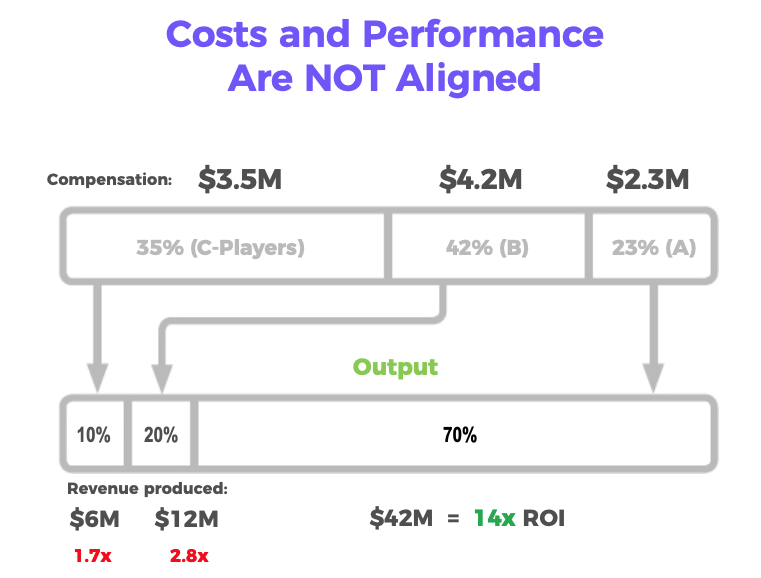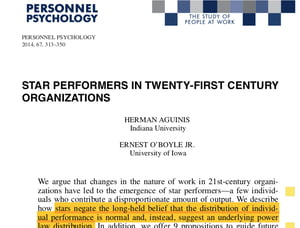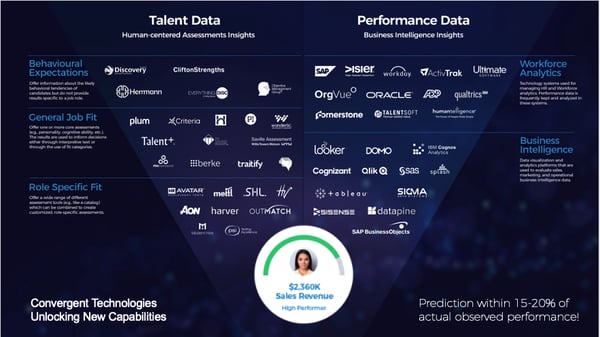~Our friend and colleague, CEO of PerceptionPredict
Kinsey Management, A Certified Partner of PerceptionPredict
Perhaps there is no greater place where the impact of our singular decisions and the consequences are more highly visible than the decisions we make when building a sales team. The decision we make on whom to hire. The cumulative impact of singular hiring and promotion decisions repeated forming the foundation of revenue production.
In fact, so superior are the results of the highest performers that their addition can signal the rise of an organization and their departure can portend decline and even organizational death (Bedein & Armenakis, 1998).
Considering the importance, let’s look together at how adopting an Archer’s Mindset can help improve sales performance results. The Archers Mindset is a concept for decision making discussed in the book, How to Decide: Simple Tools for Decision Making written by Annie Duke which I would highly recommend reading.
First, considering the reality that the results of a single high-performer sales rep can easily be 10-20 times greater (and sometimes MUCH greater) than a mid-performer, each “shot” at hiring matters immensely, and an executive must place a level of significance and rigor around the process for making these decisions. Ideally, at the time the shot is taken and also after the shot lands, “hitting the target.”
Decisions about people are always filled with complexity. As my Grandpa used to say, “Business would be easy if it wasn’t for the people.” At the end of the day, when you make a decision about whom to hire in a sales role you won’t have absolutely certain knowledge of the outcome. There are some things that are outside of your control. You’ll be making some guesses, and you won’t always be right. Think about your guesses the way an archer thinks about a target. In archery, it’s not all or nothing where you only get points for hitting a bullseye and everything else is a failure. An archer gets points for hitting the target at all. Similarly, when you are making guesses (some educated), they are like arrows. You are aiming at the bullseye, and though it’s likely that you’ll miss the exact answer, you get higher points the closer you are to the vicinity. In other words the “more-educated” your guesses the better the outcome.
The most important thing then is to be intentional when you take aim. Taking aim, making a guess or prediction about the direction and angle of your shot, the wind speed, and tension on the string, and seeing where these inputs ultimately land the arrow motivates you to get better. It motivates you to assess what you did right (what you know), and what you didn’t get right (didn’t know).
You’ll analyze both individual arrows, but also groupings of arrows seeking advantage and continuous improvements. You’ll realize that improving the education around any single guess or input in the process is cumulative and increases the likelihood of a bullseye. You’ll still miss sometimes, but you’ll miss by a smaller margin and less often.
Take a look at the image below that represents the actual distribution of sales performers found on a recently study of a sales team and imagine that each of the salespeople and their results are the locations hit on the archer’s target, with the far-right representing a bullseye. This uneven distribution is actually more the norm than the exception!
Obviously, when the hiring manager and executives pulled back the bow to launch the arrow (started the hiring process), they were aiming to land all of the arrows in the game-changer bullseye. What went wrong?
Developing an Archer’s MIndset would allow the hiring team to maximize better outcomes in the future. They’d analyze each input and ask themselves what they need to learn to move on the continuum from “pure guesses” and little knowledge and closer to perfect knowledge. They would narrow the focus to the factors that actually predict where the arrow will land. They would be conscious about “taking aim”.
One of the biggest benefit’s of the Archer’s Mindset, of making yourself take aim, is that it prompts you to ask these two questions:
- What do I already know that will make my guess more educated and how can I apply that knowledge?
- What can I find out that will make my guess more educated?
Taking intentional aim will make you hungry to answer these questions.
Think about the financial reward for making improvements. To make this real, as an example, let’s consider a company that employs 100 Account Executives against a target quota of $60 million in annual revenue. For simplicity, consider $100K per-person as the base-compensation to deploy this team. Here is how that investment returns capital:

On a team of 100 people, 23 of them deliver an impressive 14x ROI and $42 million in revenue. The remaining 77 people on the team yield a paltry return somewhere between 1.7x and 2.8x.
On the face of this, it is insanity!
An Archer’s Mindset would not accept as normal 77% of the arrows not hitting the bullseye of high-performance. Why have executives accepted this inefficiency in the deployment of sales talent when they would be unwilling to do so in any other part of their business?

Research completed by Herman Aguinis, Indiana State & Ernest O’Boyle, University of Iowa and published in the Journal of Personnel Psychology 2014 under the heading: Star Performers in Twenty-First Century Organizations suggests that there is a long-held belief that the distribution of individual performance is normal when in reality star performers suggest an underlying power-law distribution. In layman’s terms, this means that although a star performer’s production is extraordinary (sometimes 10-20x higher), their prevalence is not (O’Boyle & Aguinis, 2012); but management systems tend to view these stars as anomalies that must be ignored with a focus on the normal producer. (Aguinus, Gottfredson, & Joo, 2013)
In the words of Bill Gates, “A great lathe operator commands several times the wage of an average lathe operator, but a great writer of software code is worth 10,000 times the price of an average software writer” (Veksler,2010, point 2).
The same can be said for the top performer in a sales organization. The compounding effects of SaaS revenues or recurrent revenues produced by a top performer is exponential that of a low-performer.
This one area then, identifying what makes someone a star performer in your selling environment is central to competing and dominating your market. Indeed, minor differences in performance create dramatic differences in business valuations (Kelly & Caplan, 1993; Lepak, Takeuchi, & Snell, 2003; NArin, 1993; Rosen, 1981).
In the past, relying on past work history, structured interviews, references, and online personality assessments were the key inputs used to make hiring decisions. Because these methods have failed to significantly improve the number of “shots hitting the bullseye” leaders also throw in a fair dose of gut and intuition when it comes to the final decision on whom to add to the sales team.
“Despite the widespread belief in intuitive expertise, the data suggest it is a myth. Experience does not statistically improve a manager’s ability to predict a hires performance.”
Researchers Conway, Jako & Goodman(2012) report, “Existing evidence suggests that interrater reliability of the traditional interview is so low that, even with a perfectly reliable and valid criterion, interview-based judgments could never account for more than 10% of the variance in job performance”
Fortunately, there have been significant improvements in the analytical data tools that can assist leaders in analyzing their shots, as well as taking aim. One such tool leading the way is PerceptionPredict. PerceptionPredict has the ability to ingest massive amounts of data to give feedback to leaders making hiring decisions by making a prediction of future potential. This prediction being called a Performance Fingerprint.
This predictive capability came from the mind of Regina Chou, an I/O Psychologist, and her team of data scientists. She observed the rapidly expanding ability of human sciences to understand human traits and on the other hand, saw the disconnect between understanding these human attributes and connecting them directly to business performance on a per-individual-per-company basis.
The solution to this disconnect? Harness the business intelligence locked up in companies existing data systems to correlate on an individual level what human attributes are actually contributing to performance. Through deep statistical analysis, machine learning, and other complex processes, the PerceptionPredict.ai platform is able to give executives continuously improving insight into which of the over 400 attributes measured actually matter in their company, selling to their customers based on a forensic observation and deconstruction of the arrows they have previously aimed. This eradicates the need for the broad, assumptive application of psychographics and replaces it with surgical precision. This Performance Fingerprint is a bespoke, custom algorithm designed for each target role within a company.

This revolutionary combination of two existing technologies has unlocked the ability for executives to quickly evaluate whom to invest in and to act decisively.
Deploying intelligence platforms into their decision-making process is enabling leaders to consistently land their arrows within 15-20% of their targeted goal.
Equally important, it helps fill in the knowledge gaps about what plays into performance or failure in each arrow. As an example, one major electronics retailer believed that there were (2) critical things to consider when hiring a retail store associate; customer orientation + an affinity for technology. They had built a robust process around screening for these attributes.
A deep analysis of data however, revealed no correlation to customer orientation…meaning it does nothing to predict success in the role. More surprisingly and damaging to their efforts was the finding that the higher someones affinity for technology was, the poorer they performed. This is a classic example of how relying on gut-and-intuition can lead to an arrow being mis-aimed. Once they zeroed in on the 14 facets driving actual performance they were we’ll on the way to hitting the bullseye consistently.
When adopting the Archer’s Mindset to improve the ROI of investments in the sales team, make sure you are looking at all of the sources of intelligence that can inform your educated guesses. Every speck of insight is a cumulative advantage. Doing so will allow you to confidently place your arrows as close to the bullseye as regularly as possible.
Never accept that 77% of your arrows are destined to be off-target. Commit yourself to becoming an Olympic-level archer that swiftly and consistently can fire its arrows landing with precision on the bullseye. The rewards are worth it.
Need help understanding your arrows? We can help you.


